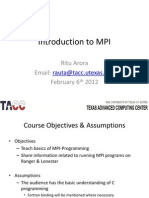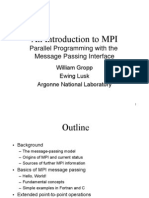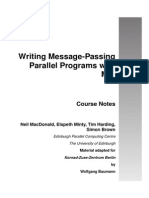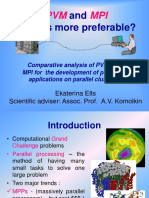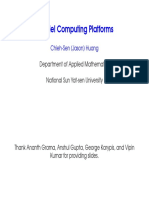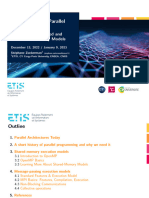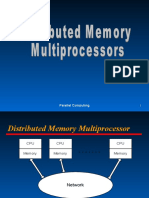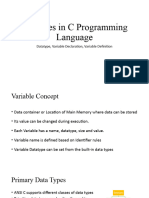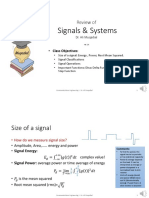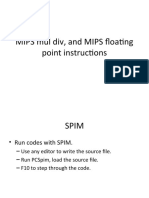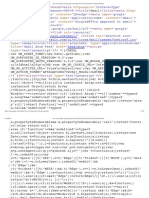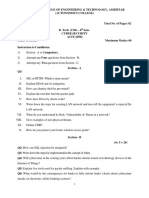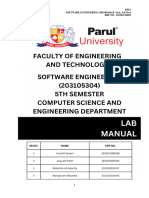0% found this document useful (0 votes)
22 views23 pagesLecture 1
This document serves as an introduction to parallel programming using the Message Passing Interface (MPI) for the academic year 2024-2025. It covers prerequisites, the need for parallel computing, various parallel programming models, and the architecture of shared and distributed memory systems. Additionally, it provides insights on MPI's role, its implementations, and examples of writing MPI programs in C, C++, or Fortran.
Uploaded by
elbana795Copyright
© © All Rights Reserved
We take content rights seriously. If you suspect this is your content, claim it here.
Available Formats
Download as PDF, TXT or read online on Scribd
0% found this document useful (0 votes)
22 views23 pagesLecture 1
This document serves as an introduction to parallel programming using the Message Passing Interface (MPI) for the academic year 2024-2025. It covers prerequisites, the need for parallel computing, various parallel programming models, and the architecture of shared and distributed memory systems. Additionally, it provides insights on MPI's role, its implementations, and examples of writing MPI programs in C, C++, or Fortran.
Uploaded by
elbana795Copyright
© © All Rights Reserved
We take content rights seriously. If you suspect this is your content, claim it here.
Available Formats
Download as PDF, TXT or read online on Scribd
/ 23





















